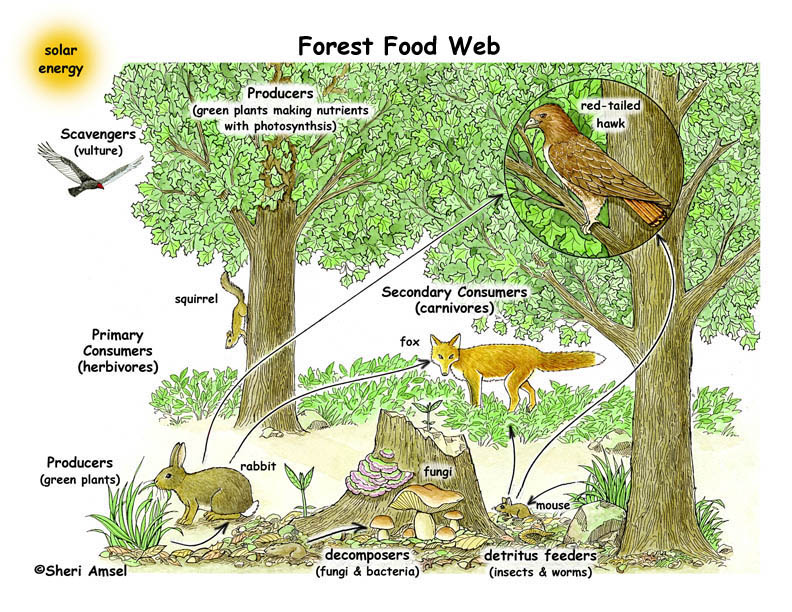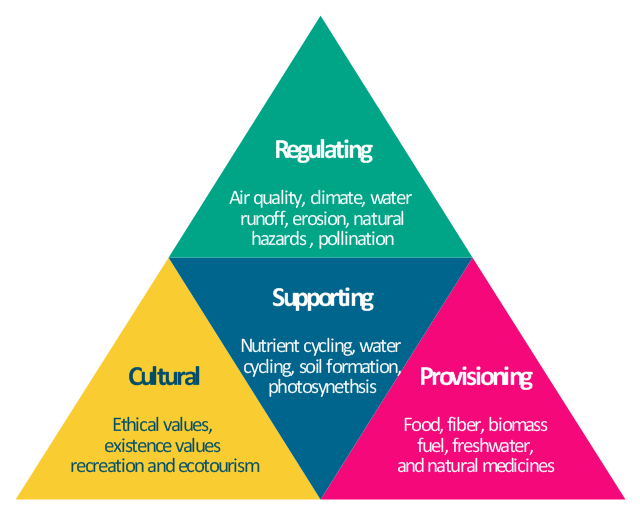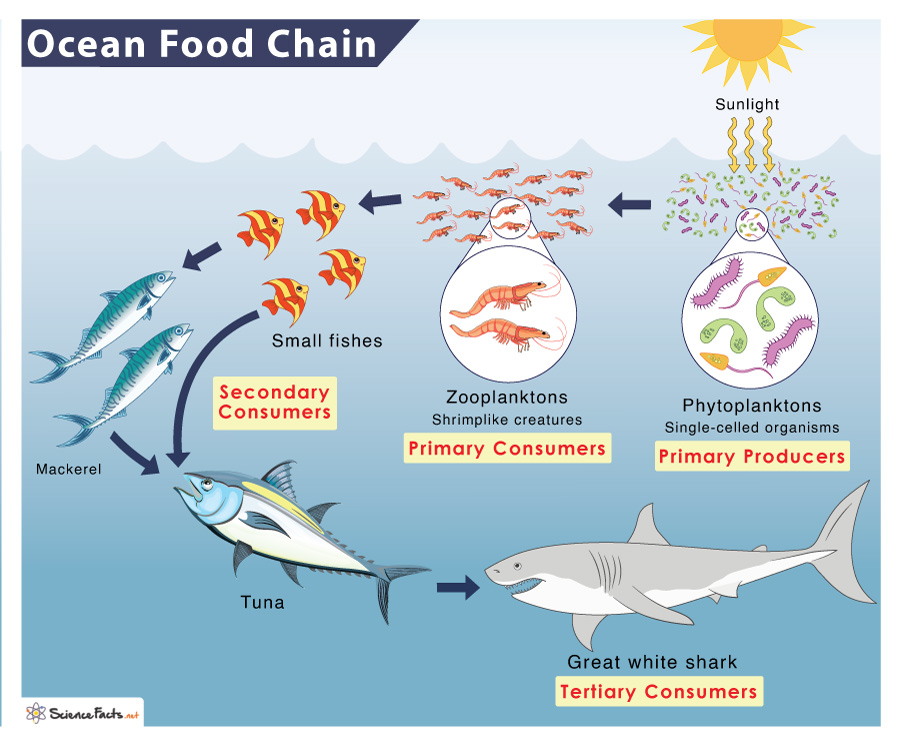Topic ecosystem of forest: Explore the vibrant ecosystem of forests, where every leaf, creature, and drop of water plays a crucial role in Earth"s complex ecological tapestry, fostering biodiversity and sustaining life.
Table of Content
- What is the definition and composition of a forest ecosystem?
- Definition and Importance of Forest Ecosystems
- Types of Forest Ecosystems
- Flora and Fauna Diversity
- Roles in Climate Regulation and Carbon Sequestration
- Water Cycle and Soil Conservation
- Threats to Forest Ecosystems
- YOUTUBE: Understanding Forest Ecosystems
- Conservation Strategies and Sustainable Management
- Human Impact and Interaction
- Research and Monitoring of Forest Ecosystems
- Future Challenges and Opportunities
What is the definition and composition of a forest ecosystem?
A forest ecosystem refers to a complex system that encompasses a specific area dominated by trees and consists of various interconnected organisms and environmental factors. It is comprised of the following components:
- Biota: Forest ecosystems contain a wide range of biotic elements, including trees, plants, animals, and microorganisms. These organisms play crucial roles in maintaining the overall balance and functioning of the ecosystem.
- Abiotic Factors: Alongside living organisms, forest ecosystems also encompass abiotic (non-living) factors such as soil, water, air, sunlight, temperature, humidity, and nutrients. These factors influence the growth and distribution of living organisms within the forest.
When combined, the biotic and abiotic elements form intricate relationships and cycles within the forest ecosystem:
- Food Chains and Food Webs: The interaction between different organisms within the forest ecosystem forms food chains and food webs. These networks demonstrate the transfer of energy and nutrients between different species, from producers (plants) to consumers (animals).
- Energy Flow: The energy derived from sunlight is captured by plants through photosynthesis. This energy then flows through the ecosystem as animals consume plants or other animals. Every transfer of energy involves a loss in efficiency, thus creating a pyramid-like energy flow within the ecosystem.
- Nutrient Cycling: Nutrients essential for the growth of organisms, such as carbon, nitrogen, and phosphorus, are cycled within the ecosystem. Decomposers like bacteria and fungi break down dead organic matter, releasing nutrients back into the soil to be absorbed by plants—completing the nutrient cycle.
- Interdependence: Forest ecosystems demonstrate a high level of interdependence among organisms. For instance, plants provide oxygen and food for animals through photosynthesis, while animals assist in pollination and seed dispersal. This interdependence ensures the stability and sustainability of the forest ecosystem.
By understanding and appreciating the complexities of forest ecosystems, we can develop strategies for their conservation and sustainable management.
READ MORE:
Definition and Importance of Forest Ecosystems
A forest ecosystem encompasses a dynamic and complex community of plants, animals, microorganisms, and their abiotic (non-living) environment interacting as a functional unit. These ecosystems are crucial for the health of our planet, providing essential services such as oxygen production, carbon sequestration, and habitat for a vast diversity of species.
- Forests cover one-third of the Earth"s land, playing a pivotal role in maintaining ecological balance and supporting millions of livelihoods.
- They act as vital carbon sinks, absorbing carbon dioxide from the atmosphere, thereby mitigating the effects of climate change.
- Forests regulate water cycles, ensuring the availability of fresh water and preventing floods and droughts.
- They are home to over half of the world"s terrestrial species, making them essential for biodiversity conservation.
- Forests contribute to soil health by preventing erosion and fostering a rich microbial community that recycles nutrients.
Understanding and preserving forest ecosystems are crucial for sustainability, climate regulation, and the continuation of life on Earth. They offer not just ecological, but also economic, social, and health benefits to humanity.
:max_bytes(150000):strip_icc()/497408077-56af61ff3df78cf772c3c309.jpg)
Types of Forest Ecosystems
Forest ecosystems are diverse and vary significantly across the globe, depending on climate, soil type, and geographical location. Each type supports a unique set of flora and fauna, adapted to its specific environment.
- Tropical Rainforests: Located near the equator, these forests are characterized by high rainfall and biodiversity, home to many species not found anywhere else.
- Temperate Deciduous Forests: Found in temperate zones, these forests experience four distinct seasons, with trees that lose their leaves in autumn.
- Temperate Coniferous Forests: Also located in temperate zones but dominated by evergreen conifers, providing habitats for a variety of animals.
- Boreal Forests (Taiga): Situated in the subarctic and arctic regions, these are the world"s largest land biome, composed mostly of conifers.
- Tropical Dry Forests: These forests experience a seasonal drought, with species adapted to the dry season.
- Temperate Rainforests: Located in temperate coastal areas, receiving high rainfall, these ecosystems support a rich diversity of mosses, ferns, and trees.
Understanding the types of forest ecosystems is crucial for conservation efforts, as each ecosystem requires different strategies to maintain its unique biodiversity and ecological functions.
Flora and Fauna Diversity
The forest ecosystem is a treasure trove of biodiversity, hosting an incredible variety of plant and animal life. Each type of forest ecosystem boasts its own unique flora and fauna, adapted to thrive in specific environmental conditions.
- Flora: Forests are home to a wide range of plant species, from towering trees and lush underbrush to delicate mosses and fungi. Tropical rainforests, for instance, are renowned for their dense canopies and diverse species of trees, epiphytes, and lianas, while boreal forests are dominated by coniferous trees such as pines, spruces, and firs.
- Fauna: The animal life in forests is equally diverse, including insects, birds, mammals, reptiles, and amphibians. Tropical forests are teeming with species like jaguars, orangutans, and myriad bird species, whereas temperate forests may host deer, bears, and various bird species. Boreal forests serve as a habitat for animals such as moose, wolves, and owls.
This remarkable diversity not only makes forests a fascinating subject of study but also crucial for ecological balance and the provision of ecosystem services, including pollination, seed dispersal, and habitat provision. Protecting these ecosystems is essential for preserving biodiversity and ensuring the health of our planet.

Roles in Climate Regulation and Carbon Sequestration
Forests play a pivotal role in regulating the global climate and sequestering carbon, thereby mitigating the impacts of climate change. They do this through various mechanisms:
- Carbon Sequestration: Trees absorb carbon dioxide from the atmosphere during the process of photosynthesis, storing carbon in their biomass and soil, making forests significant carbon sinks.
- Climate Regulation: Forests influence local and global climates by moderating temperatures, increasing rainfall, and reducing the risk of droughts and floods through their impact on the water cycle.
- Oxygen Production: Through photosynthesis, forests produce oxygen, contributing to the balance of oxygen and carbon dioxide in the atmosphere.
- Albedo Effect: Forests can influence the Earth"s albedo, or reflectivity, which affects atmospheric temperatures. Darker forested areas absorb more sunlight, whereas deforested areas or snow-covered regions reflect more sunlight, influencing global temperatures.
- Soil Protection: Forests protect soil from erosion through their root systems, reduce the speed of runoff, and help in the formation of soil by contributing organic matter.
Protecting and restoring forest ecosystems are critical strategies in the fight against climate change, enhancing carbon sequestration, and ensuring the health and stability of the planet"s climate system.
Water Cycle and Soil Conservation
Forests play a critical role in the water cycle and soil conservation, maintaining ecological balance and supporting life across the planet.
- Regulation of the Water Cycle: Forests absorb rainfall, with trees and soil acting as natural sponges, releasing water slowly into rivers and streams. This process helps regulate river flows, reduces flooding, and ensures water availability during dry periods.
- Soil Conservation: The root systems of forest trees stabilize soil, preventing erosion caused by wind and water. Forest litter, composed of fallen leaves and branches, further protects the soil by providing a protective cover that minimizes soil erosion and enhances soil moisture retention.
- Nutrient Cycling: Forests contribute to the cycling of nutrients within the ecosystem. Decomposition of organic matter from dead plants and animals returns nutrients to the soil, promoting fertility and supporting the growth of diverse plant life.
- Groundwater Recharge: Forests facilitate the infiltration of water into the ground, replenishing aquifers and maintaining groundwater levels. This is crucial for sustaining water supplies for both natural ecosystems and human use.
- Prevention of Desertification: By maintaining soil health and preventing erosion, forests help prevent desertification, ensuring productive lands remain arable and supporting agriculture and livelihoods.
The sustainable management of forest ecosystems is essential for the preservation of water resources and soil, highlighting the interconnectedness of forests with the broader environmental and human health.
:max_bytes(150000):strip_icc()/489034241_5-56af62885f9b58b7d0183204.jpg)
Threats to Forest Ecosystems
Forest ecosystems face numerous threats that can significantly impact their health, biodiversity, and ability to provide essential ecosystem services. Understanding these threats is crucial for effective conservation and management strategies.
- Deforestation: The clearing of forests for agriculture, logging, and urban development leads to habitat loss, biodiversity decline, and increased carbon emissions.
- Climate Change: Rising temperatures, changing precipitation patterns, and increased frequency of extreme weather events can alter forest ecosystems, affecting species distribution and forest health.
- Invasive Species: Non-native plants, animals, and pathogens can disrupt forest ecosystems by outcompeting or preying on native species, leading to a loss of biodiversity.
- Pollution: Air, water, and soil pollution from industrial, agricultural, and urban sources can damage forest health and productivity.
- Overexploitation: Unsustainable logging, hunting, and collection of forest products can lead to the depletion of resources and species.
- Fire: While fire is a natural part of some forest ecosystems, increased frequency and intensity of wildfires, often exacerbated by climate change and human activities, can cause extensive damage.
- Disease and Pests: Trees weakened by stressors such as pollution or climate change are more susceptible to diseases and pests, which can lead to significant forest loss.
Addressing these threats requires global cooperation, sustainable management practices, and the implementation of conservation strategies to ensure the resilience and sustainability of forest ecosystems worldwide.
Understanding Forest Ecosystems
Discover the wonders of biodiversity in this captivating video that takes you on a journey through the diverse and fascinating ecosystems of our planet. Explore the intricate web of life, the beauty of different species, and the importance of protecting our natural world.
Forest Ecosystem Biology Animation
Dive into a world of enchantment with this mesmerizing animation video! Get ready to be amazed as stunning illustrations come to life, telling a compelling story that will captivate both children and adults. Immerse yourself in a visually stunning experience that will leave you wanting more.
Conservation Strategies and Sustainable Management
Effective conservation and sustainable management practices are crucial for protecting forest ecosystems and ensuring their benefits are preserved for future generations. These strategies focus on balancing ecological health with human needs.
- Protected Areas: Establishing national parks, nature reserves, and wildlife sanctuaries to protect biodiversity and habitat from human exploitation.
- Sustainable Forestry Practices: Implementing sustainable logging practices that minimize environmental impact, such as selective logging and replanting, to maintain forest cover and biodiversity.
- Community Involvement: Engaging local communities in conservation efforts through education, sustainable livelihood programs, and participatory management to ensure local support and sustainable use of resources.
- Restoration Projects: Restoring degraded forests through reforestation and afforestation efforts, using native species to recover biodiversity and ecosystem functions.
- Policy and Legislation: Developing and enforcing laws and policies that promote forest conservation, protect endangered species, and regulate land use and forest activities.
- Climate Change Mitigation: Implementing strategies to reduce carbon emissions and enhance carbon sequestration in forests, contributing to global climate change mitigation efforts.
- Research and Monitoring: Conducting ongoing research and monitoring to understand forest dynamics, assess conservation status, and adapt management practices based on scientific findings.
Through these integrated approaches, it is possible to manage forest ecosystems in a way that conserves biodiversity, supports ecological functions, and meets human needs sustainably.

Human Impact and Interaction
Human activities have profoundly impacted forest ecosystems globally, altering their natural state, health, and biodiversity. However, positive interactions through sustainable practices can mitigate these impacts and aid in forest conservation.
- Deforestation and Land Use Change: Agriculture expansion, logging, and urbanization reduce forest cover, leading to loss of habitat and biodiversity.
- Pollution: Industrial, agricultural, and urban pollutants harm forest health, affecting both flora and fauna.
- Climate Change: Human-induced climate change affects forest ecosystems by altering weather patterns, increasing vulnerability to pests, and changing species distributions.
- Conservation Efforts: Protected areas, sustainable forest management, and restoration projects demonstrate positive human interaction, aiming to preserve and restore forest ecosystems.
- Community Engagement: Involving local communities in conservation and sustainable practices fosters stewardship, ensuring the longevity and health of forest ecosystems.
- Eco-tourism: Responsible tourism educates about conservation while minimizing ecological footprints, promoting awareness and financial support for forest preservation.
- Research and Education: Scientific research and education increase understanding of forest ecosystems, guiding conservation efforts and policy development.
Through conscious efforts and sustainable interactions, humans can significantly contribute to the preservation and enhancement of forest ecosystems, ensuring their resilience and continued provision of essential ecosystem services.
Research and Monitoring of Forest Ecosystems
Research and monitoring are essential components of understanding, conserving, and sustainably managing forest ecosystems. These activities help gather vital data on forest health, biodiversity, and the impacts of human activities and natural processes.
- Baseline Data Collection: Establishing baseline data on forest composition, structure, and function is crucial for long-term monitoring and assessment of changes.
- Biodiversity Assessment: Researching the diversity of species within forest ecosystems to understand the richness and rarity of flora and fauna, crucial for conservation efforts.
- Climate Change Effects: Monitoring the impacts of climate change on forests, including shifts in species distribution, health, and productivity.
- Human Impact Analysis: Studying the effects of deforestation, pollution, and land-use change on forest ecosystems to develop strategies for mitigation and restoration.
- Ecological Processes: Researching ecological processes such as nutrient cycling, succession, and predator-prey relationships to understand forest dynamics.
- Remote Sensing and GIS: Utilizing satellite imagery and geographic information systems (GIS) for large-scale monitoring of forest cover, health, and changes over time.
- Community Involvement: Engaging local communities in monitoring projects to incorporate traditional knowledge and ensure the sustainable use of forest resources.
Through continuous research and monitoring, scientists and conservationists can make informed decisions to protect forest ecosystems, ensuring their health and resilience against threats and changes.

READ MORE:
Future Challenges and Opportunities
As we look towards the future, forest ecosystems face both significant challenges and opportunities for conservation and sustainable management. Addressing these challenges and seizing opportunities will be crucial for the health of our planet.
- Climate Change: One of the biggest challenges is the impact of climate change on forest health, species migration, and biodiversity. Adaptive management strategies and resilience building are essential.
- Deforestation: Combating deforestation through stronger regulations, reforestation efforts, and promoting sustainable land use practices offers a path forward.
- Biodiversity Loss: Protecting and restoring habitats to prevent biodiversity loss is critical. This includes creating wildlife corridors and protecting keystone species.
- Technological Advances: Utilizing technology for better monitoring and management of forests, including remote sensing, GIS, and AI, presents an opportunity for more effective conservation efforts.
- Community Engagement: Engaging local communities in forest management and conservation can ensure sustainable practices and protect indigenous rights and knowledge.
- Global Cooperation: International collaboration is necessary to address cross-border challenges such as illegal logging and wildlife trafficking.
- Economic Incentives: Developing economic incentives for conservation, such as payments for ecosystem services, can motivate sustainable forest management.
By addressing these challenges with innovative solutions and global cooperation, we can ensure the preservation and resilience of forest ecosystems for future generations.
In the heart of our planet"s health, forest ecosystems stand as guardians of biodiversity and climate stability. Protecting these natural treasures promises a sustainable future, inviting us all to partake in their preservation and marvel.




:max_bytes(150000):strip_icc()/3-3612f0362edd4dbcb192589a466f2cb4.jpg)

